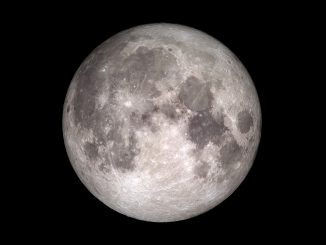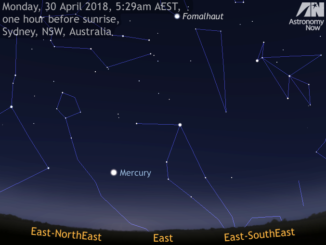
NASA has selected nine research teams to analyse pristine samples of lunar soil returned to Earth by the Apollo astronauts and left untouched for the past five decades. The U.S. space agency has allotted $8 million for the research under the Apollo Next Generation Sample Analysis program, or ANGSA.
“When the previous generations did Apollo, they knew that the technology they had in that day was not the technology we would have in this day,” said NASA Administrator Jim Bridenstine. “So they (decided) to preserve samples, because they knew there would be a day when better technology would be able to better assess the history of the moon.”
Bridenstine made the announcement while unveiling NASA’s $21.5 billion 2020 budget request from the Trump administration, a budget that supports the agency’s plans to return astronauts to the moon by 2028.
“We have nine teams that will be examining nine unopened samples that have come back from the moon,” the administrator said. “We feel like we can do that because there are more lunar samples on the horizon where we’re going to be able to learn more than we’ve ever learned about the moon before. So I’d like to thank the Apollo generation for preserving these samples so that our generation can have this opportunity.”
The samples were collected during the Apollo 15, 16 and 17 missions. An Apollo 17 sample, for example, will be studied by the University of New Mexico’s Institute of Meteoritics, which will receive about 800 grams (1.8 pounds) of material from a core sample that was sealed in a vacuum container on the surface of the moon.
The team will measure the chemical constituents of the sample and “prepare us to explore and sample potential resources for future human activities,” said research assistant Charles Shearer. “Further, this will be the first analysis of a core through a lunar landslide deposit and will further our understanding of the timing, triggers, and dynamics of these events. The deposit may contain new lunar rocks never sampled before.”
Another sample will be assessed by Darby Dyar at the Planetary Science Institute.
“This project brings massive state-of-the-art synchrotron and infrared analysis to bear on tiny lunar samples to unlock the secrets of the lunar interior,” said Dyar, a senior scientist at PSI. “We will use state-of-the-art synchrotron technology and a mapping FTIR spectrometer to measure gradients of volatiles hydrogen and oxygen – preserved in lunar glass beads.”
Such beads are formed by “rapid cooling of droplets from explosive lunar fire fountains, like those seen in Hawaii,” she said. “We will map changes from core to rim that reveal hydrogen and oxygen pressures in the lunar interior and before, during, and after eruption.”
Another research team, led by Jessica Barnes, an incoming assistant professor at the University of Arizona’s Lunar and Planetary Laboratory, will look for traces of water in a 110-gram (4 ounce) sample that was collected by the Apollo 17 crew. Like the other samples, the soil was moved into a freezer within a month of the astronauts’ return.
“The question we want to answer is, are we measuring the true Moon signature? Or are there terrestrial influences that have affected the samples during their storage?” Barnes said. “The beauty of a frozen sample is that it’s been kept curated in a different way from the samples stored at room temperature. We could not do this research without opening the frozen samples.”



